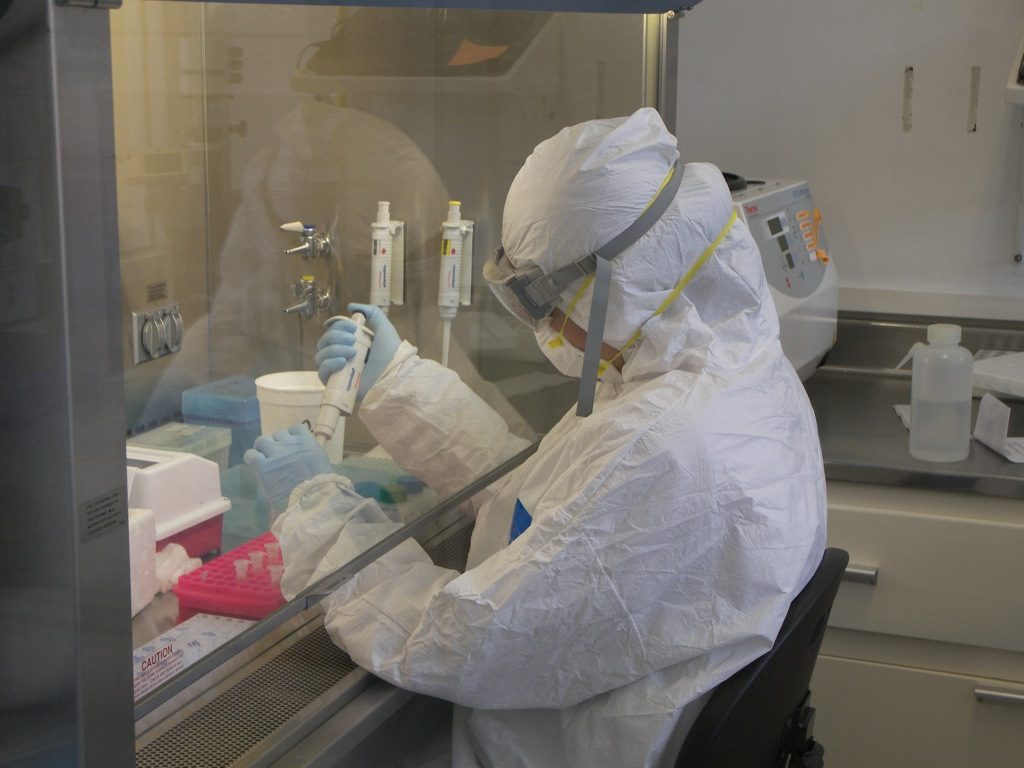
(2006, Mar. 1). Viruses: The new cancer hunters. IsraCast Retrieved Mar. 20, 2012, from http://www.isracast.com/article.aspx?id=15.
At this point in time the archetype for viruses continually points to those things negative. This belief is slowly yet surly being reevaluated. According to the Encyclopedia Britannica a virus is a tiny, basic infectious agent that is capable of multiply inside of living host cells of animals, plants and bacteria. The etymology of the term translated from Latin can mean “poisonous.” Virology is the branch of medicine that studies viruses. Viro-therapy is a relatively new field that deals with the reprogramming of viruses to fight and kill only cancerous cells much like the isolated NDV-HUJ variant discovered by the virology department at the Hebrew University. As early as the 1940’s a unique approach on virology was taken when viruses were tested on animals with tumors. 16 years later one of the first human trials with an oncolytic (cancer killing) virus was documented. Research was halted for several decades as technology caught up to this avant-garde way of thinking. It was not until 2006 that researchers from the Hebrew University Hadassah Medical School were able to isolate a specific virus in order to target precise cancer cells. The virus that was successfully isolated is a variant of Newcastle Disease Virus (NDV-HUJ).
I believe this paragraph would have precedence in our group’s annotated paper as it carefully describes the development of a medical procedure that is still being researched for implementation. The question about the issues (ethical, economical, or social) that affect whether medical practices are or are not adopted by medical professionals is answered with an overview of the history on a brand new branch of medicine altogether. Proving that there are always advances in the field of medicine. The audience is also enlightened to the realities regarding viruses and potential positive uses with proper engineering.
Cao, X., Yang, M., Wei, R., Zeng, Y., Gu, J., Huang, W., & … Liu, X. (2011). Cancer targeting Gene-Viro-Therapy of liver carcinoma by dual-regulated oncolytic adenovirus armed with TRAIL gene. Gene Therapy, 18(8), 765-777. doi:10.1038/gt.2011.16
“‘Cancer Targeting Gene-Viro-Therapy’ (CTGVT), was developed in 2001 and has shown promise in the treatment of cancer.” CTGVT integrates both gene therapy (treatment procedures working with hereditary units), and oncolytic (cancer killing) viral therapy. Eleven researchers (Xu et al.) plan and execute several tests to validate their hypothesis regarding an onclytic adenovirus that is to target liver cancer. There are eleven tests performed in order to accurately depict their what they are claiming. The conclusion suggests that their accomplishment produced methods for studying anti-cancer efficacy using an adenoviral vector. Adenoidal-pharyngeal-conjunctival virus (adeno virus), is mentioned as having undergone dual and triple regulation, the study by Xu et al. was the first reported quadruple-regulatory test procedure for adenovirus. An adenovirus is a virus that may incite an upper respiratory tract infection. The final remarks elicits, in great detail, how the strategies of Xu et al. has a greater reduced toxicity and an advanced desired result in liver cancer cells when compared to previous procedures with the same goal.
This paragraph sits well with the annotation I previously deliver regarding virotherapy. This is a much closer look at group research in the efforts to turn science into medical practice. Part of my groups topical question deals with the how medical practices is implemented into medical society. This is a great annotation for anyone who is serious about understanding how the contemporary science community discovers new practices. This annotation outlines a brief, simplified, synopsis, on an extremely scientific academic journal. It answers the question, by way of interpretation, the extensiveness and length of research science.
ABSTRACT:
In previously published studies, oncolytic adenovirus-mediated gene therapy has produced good results in targeting cancer cells. However, safety and efficacy, the two most important aspects in cancer therapy, remain serious challenges. The specific expression or deletion of replication related genes in an adenovirus has been frequently utilized to regulate the cancer cell specificity of a virus. Accordingly, in this study, we deleted 24 bp in E1A (bp924-bp947) and the entirety of E1B, including those genes encoding E1B 55kDa and E1B19kDa. We used the survivin promoter (SP) to control E1A in order to construct a new adenovirus vector named Ad.SP. E1A(Δ 24).Δ E1B (briefly Ad.SPDD). HCCS1 (hepatocellular carcinoma suppressor 1) is a novel tumor suppressor gene that is able to specifically induce apoptosis in cancer cells. The expression cassette AFP-HCCS1-WPRE-SV40 was inserted into Ad.SPDD to form Ad.SPDD-HCCS1, enabling us to improve the safety and efficacy of oncolyticmediated gene therapy for liver cancer.
RESULT:
Ad.SPDD showed a decreased viral yield and less toxicity in normal cells but enhanced toxicity in liver cancer cells, compared with the cancer-specific adenovirus ZD55 (E1B55K deletion). Ad.SPDD-HCCS1 exhibited a potent anti-liver-cancer ability and decreased toxicity in vitro. Ad.SPDD-HCCS1 also showed a measurable capacity to inhibit Huh-7 xenograft tumor growth on nude mice. The underlying mechanism of Ad.SPDD-HCCS1-induced liver cancer cell death was found to be via the mitochondrial apoptosis pathway.
CONCLUSION:
These results demonstrate that Ad.SPDD-HCCS1 was able to elicit reduced toxicity and enhanced efficacy both in vitro and in vivo compared to a previously constructed oncolytic adenovirus. Ad.SPDD-HCCS1 could be a promising candidate for liver cancer therapy.
